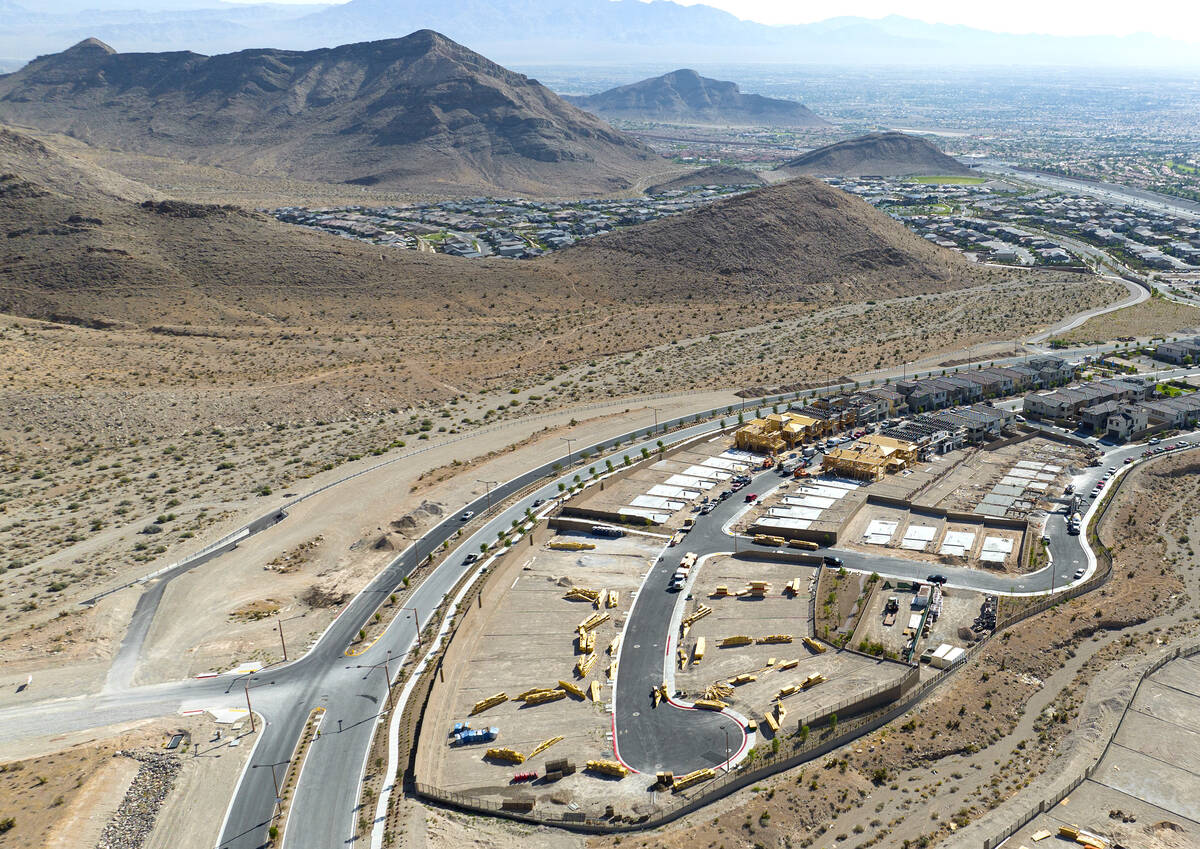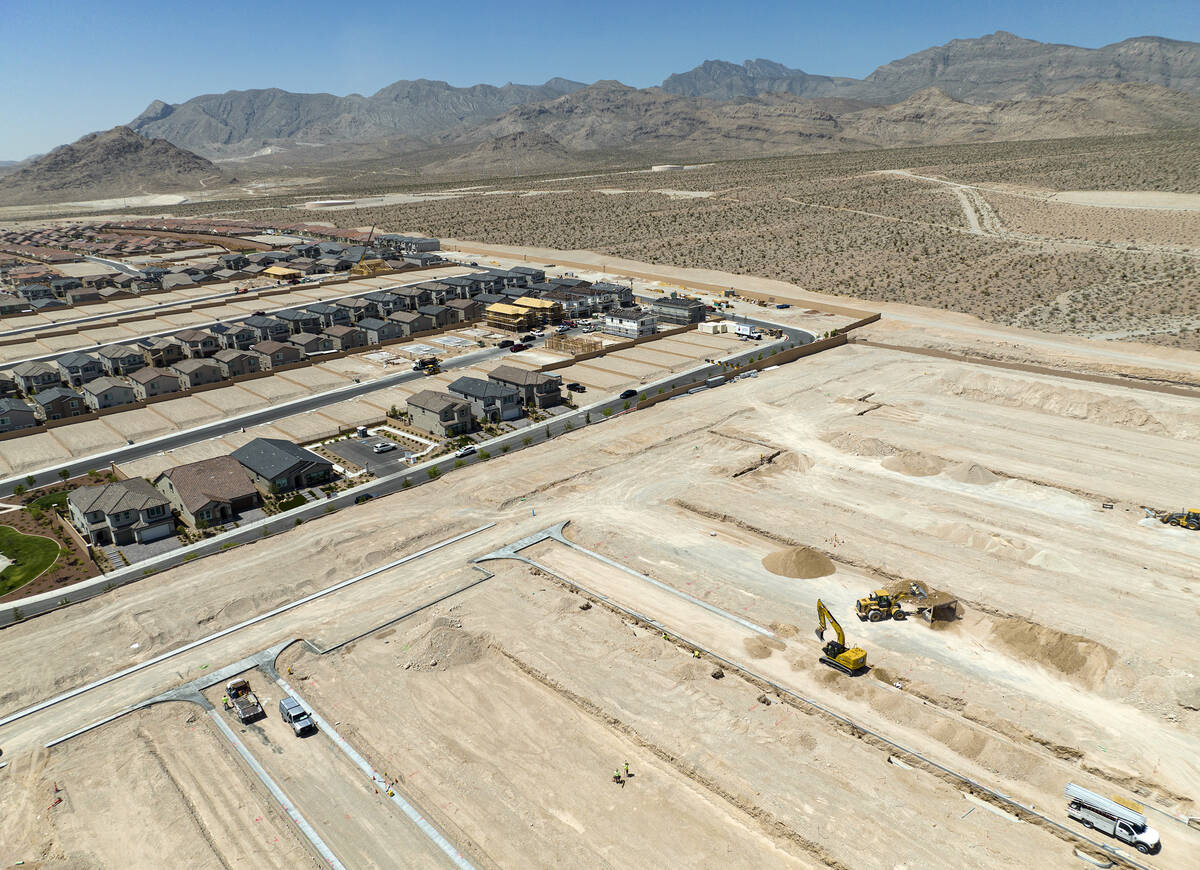Water woes are slowing growth around Phoenix. What about Las Vegas?
Arizona officials announced this month that the state would not approve new housing construction on the burgeoning edges of the Phoenix metro area because there isn’t enough water to support planned future growth.
The announcement brought a national focus to Phoenix and other western cities grappling with dwindling water supplies amid long-term drought while demand for new growth continues to increase.
It also begs the question: Could Las Vegas be next?
John Entsminger, the general manager of the Southern Nevada Water Authority, certainly doesn’t think so. At least not for the next several decades.
“I think the situations are very different,” Entsminger said.
While the Las Vegas and Phoenix metro areas are both desert cities in the Southwest dealing with shrinking water supplies, they differ significantly in where they get their water.
Reliance on groundwater
As the Kyl Center for Water Policy at Arizona State University noted in a report following the announcement from Arizona officials, the areas that will be affected by the decision are those that have historically been reliant on local groundwater. Those areas are mostly outside the service area of municipal water suppliers.
In her announcement, Arizona Gov. Katie Hobbs said projections showed that demand for groundwater in the Phoenix area over the next 100 years would outpace supplies by about 4.9 million acre-feet. An acre-foot of water is enough to supply about two to three average U.S. homes a year.
But in Southern Nevada, groundwater only makes up a small fraction of the region’s annual water supplies.
Only about 10 percent of Southern Nevada’s water is drawn from groundwater sources. The rest comes from Nevada’s share of the Colorado River, a water system that is dealing with its own dwindling supplies.
Nevada typically receives 300,000 acre-feet of water annually from the river but has seen that number reduced in recent years because of previously agreed-to cuts based upon Lake Mead’s levels.
But even with those reductions, Las Vegas has used far below its usual share of the river. And that’s despite significant growth in the region’s population.
Southern Nevada has reduced the amount of Colorado River water it consumes from roughly 325,000 acre-feet in 2002 to just 224,000 acre-feet in 2022 — all while adding nearly 800,000 residents in that time frame.
In the last three years alone, the valley has seen more than 45,000 new water connections, according to the water authority, while reducing the amount of water it consumes from the river by about 12 percent.
“This common correlation of growth and increased water consumption simply isn’t born out in empirical data,” Entsminger said.
While Entsminger doesn’t expect the Las Vegas Valley to see any growth restrictions in the coming decades, the decision in Arizona has similarities to one that flew mostly under the radar in Southern Nevada just a few years ago.
Moratorium in Blue Diamond
In late 2020, the Las Vegas Valley Water District, which supplies water to Las Vegas and unincorporated Clark County, was evaluating requests for new water commitments in the tiny Blue Diamond community, a neighborhood of roughly 350 people located near Red Rock Canyon National Conservation Area.
Blue Diamond relies solely on local groundwater, and diminishing winter precipitation in the Spring Mountains that provides the main source of water to the aquifer had created a situation where the water sources could be stressed by future growth.
“Due to continued drought and climate change, water levels in Blue Diamond will not be able to sustain future water commitments,” the district wrote in a slide presentation dated Dec. 1, 2020.
With future groundwater resources uncertain, the water district in December 2020 put a moratorium on new home builds in the small rural community on the edge of the Las Vegas Valley until a new water supply could be established.
But Entsminger said that is not a situation that the water authority projects under any scenario for the main portion of the valley over the next 50 years.
And in Arizona, don’t expect growth to stop in the nation’s fifth-largest city because of the groundwater restrictions.
Hobbs noted in her announcement that there are roughly 80,000 unbuilt homes that will be allowed to move forward because they have secured what are known as “assured water supply” certificates with the state. Even in those areas where the restrictions will be felt, growth is still possible if developers can find alternative water sources.
“Growth will continue, but the pattern and rate of growth will likely change. Growth on groundwater will be slowed,” the Kyl Center’s report said.
If Las Vegas can hit its conservation goal of reducing water use to 86 gallons per person per day by 2035, Entsminger said, the valley can continue to grow with a negative water footprint.
“But if you rest on your laurels, refuse to do additional things, then yeah, there could be a point of diminishing returns,” he said. “If we see that, it’s going to emerge as a trend, not as a shock.”
Contact Colton Lochhead at clochhead@reviewjournal.com. Follow @ColtonLochhead on Twitter.































